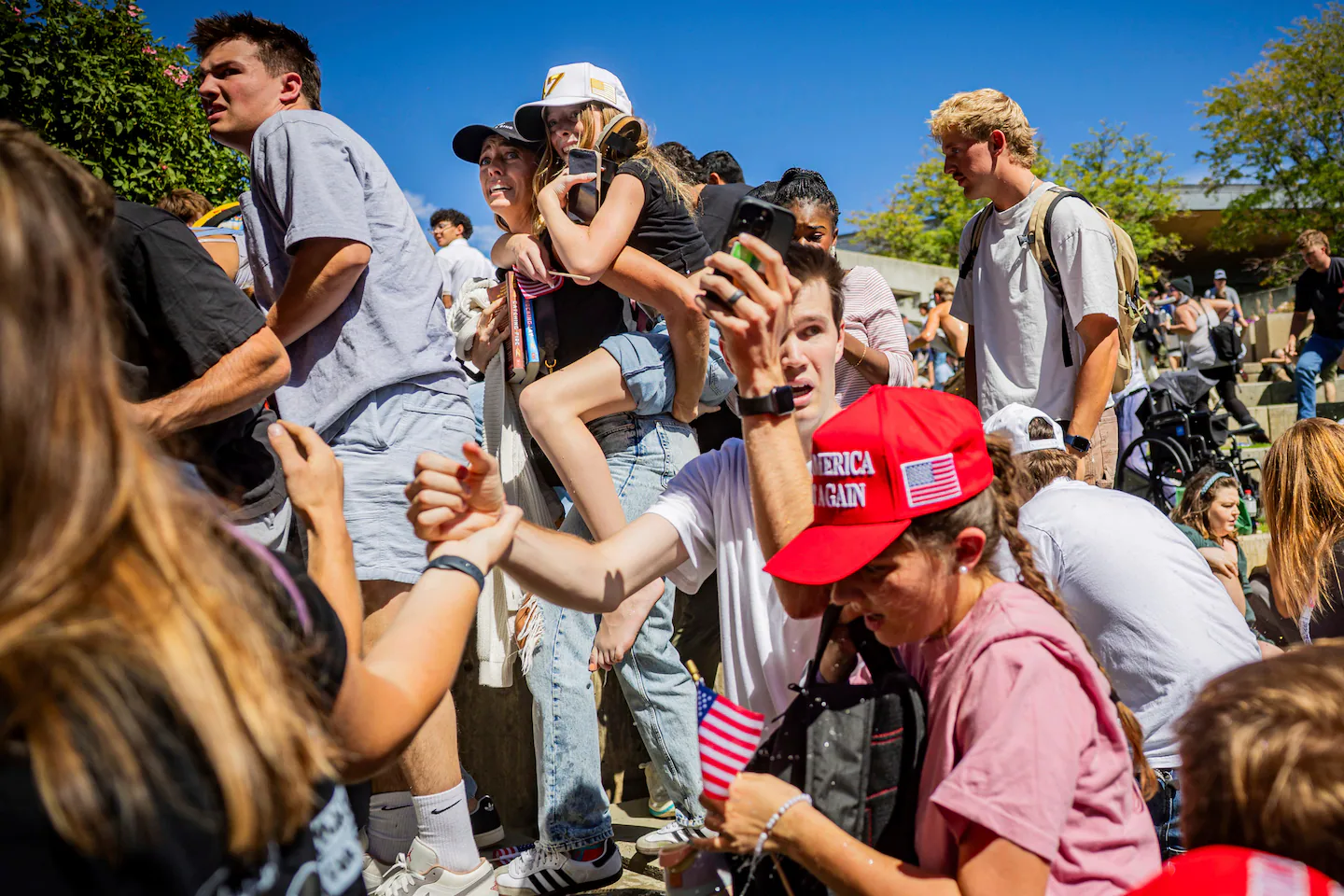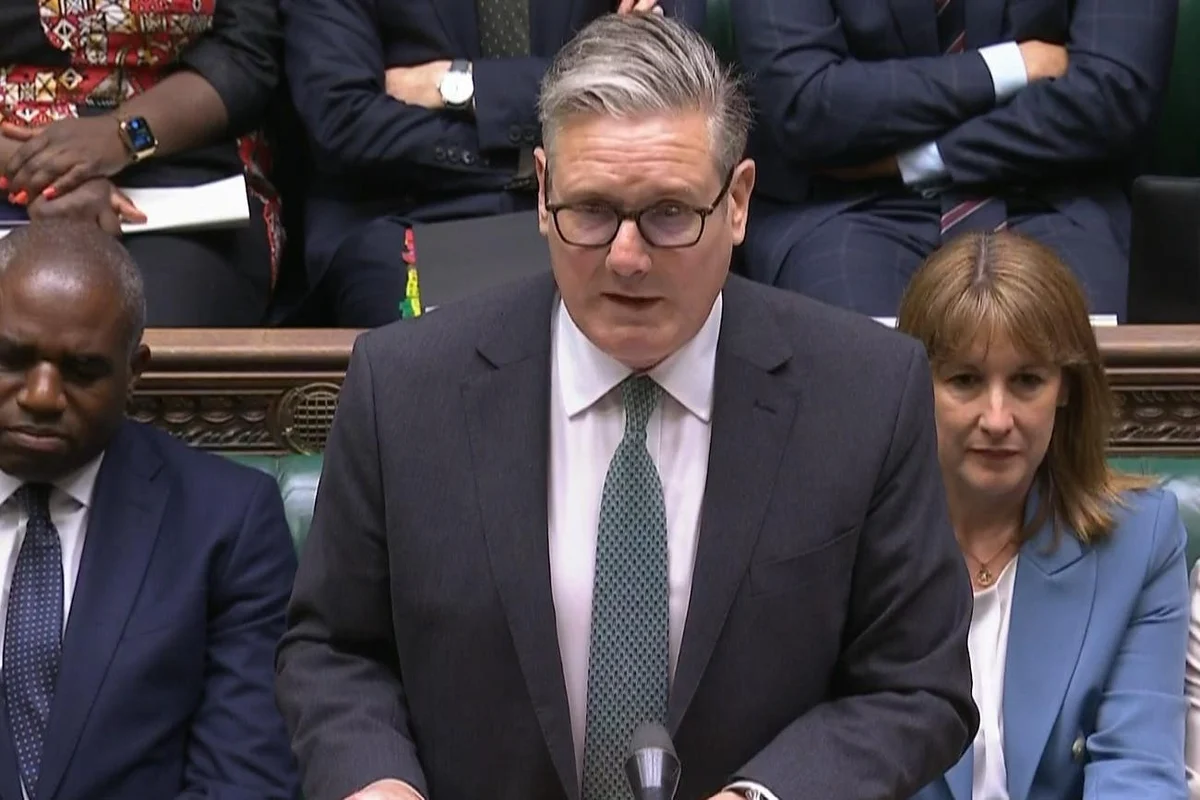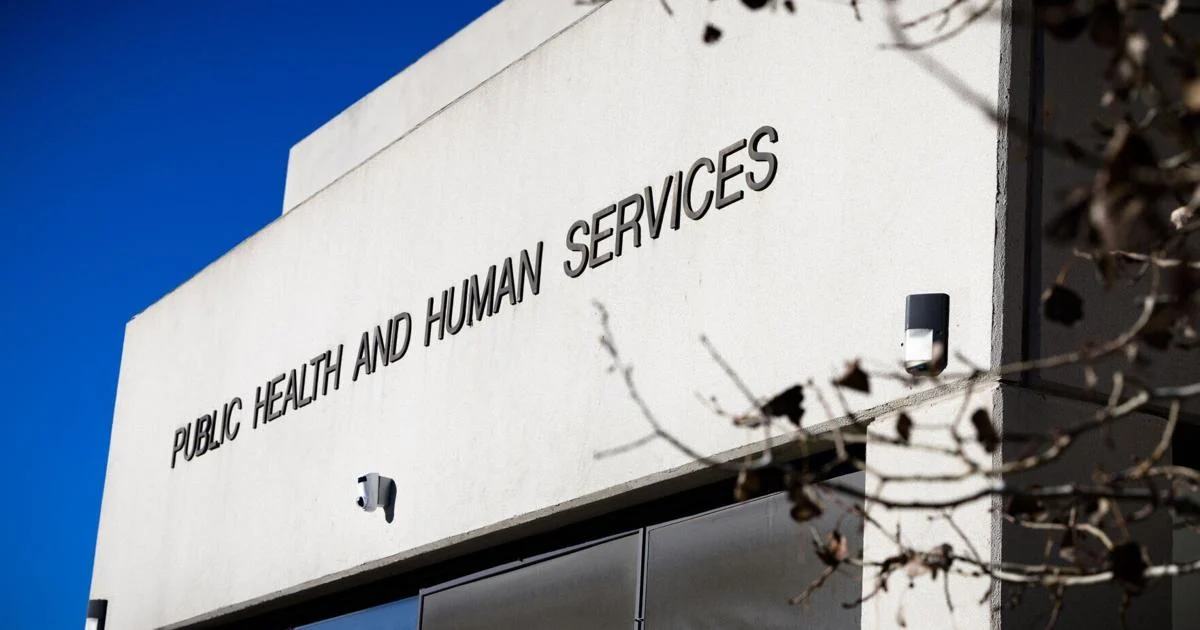
But what I felt then is nothing compared with half a century later, as the reality of a country disintegrating grows steadily worse. My sense of ever-more-alarming disorder has been mounting for years — through the riots and arson that followed George Floyd’s killing in 2020, the storming of the US Capitol on Jan. 6, 2021, and the eruption of antisemitic hatred since Oct. 7, 2023. Now comes the horrifying assassination of Charlie Kirk, shot dead while speaking at a college in Utah, an act of homicide witnessed not just by those on the scene but by millions online.
His death is the latest in a grim litany:
Donald Trump survived one assassination attempt and was targeted in another. A Minnesota state legislator and her husband were murdered in June. A shooter fired hundreds of rounds at the Centers for Disease Control and Prevention headquarters. The home of Pennsylvania’s governor was firebombed. A terrorist in Boulder, Colo., used a flamethrower in a deadly attack on supporters of Israel. UnitedHealthcare’s CEO was gunned down in Manhattan. Two Israeli embassy staffers were killed outside the Capital Jewish Museum in Washington.
Earlier, Paul Pelosi was savagely beaten by a right-wing intruder who broke into his home intending to kidnap his wife, then-House speaker Nancy Pelosi. Representative Steve Scalise, the House majority whip, was shot and severely wounded by a left-wing domestic terrorist as he and other Republicans played baseball. A gunman targeted the family of federal judge Esther Salas, killing her son and critically wounding her husband.
The nation has entered an “era of violent populism,” Robert Pape of the University of Chicago told The Washington Post last week. “It is a historically high era of assassination, assassination attempts, violent protests, and it is occurring on both the right and the left.” Governor Spencer Cox of Utah put it more bluntly: “Our nation is broken,” he said after Kirk was assassinated in his state.
That’s also how it felt in the 1960s and early 1970s. Many Americans believed the country was experiencing a nervous breakdown, all the more so when four unarmed students at Kent State University were killed by Ohio National Guardsmen in 1970. Commentators spoke darkly of out-of-control social turmoil. William Shannon described a “spirit of nihilism” tearing America apart and saw parallels to “the Weimar Republic of 1932-33.” Editorialized the Los Angeles Times: “We are a sick society. … [A] kind of mental and moral decay is eating out the vitals of this country.”
And yet, out of that fearful tumult sprouted renewal. The disillusioned young baby boomers eventually shifted toward optimism. Within a decade, Ronald Reagan was in the White House, and it was again “Morning in America.” There was a palpable sense of faith recovered and hope restored.
I wish I could believe that our grim present moment will similarly give way to a rebirth of good will. But the differences between then and now are too numerous and stark.
Consider:
1. There was no internet in the 1960s and 1970s. The American people still shared a common civic space. Most people watched the same nightly newscasts, read a daily newspaper, absorbed the same facts. Disagreement could be fierce, but the information baseline was shared. Today, there are thousands of competing public squares online. Social media thrives on division, rewarding the harshest, most uncompromising voices. And the generation that has grown up amid this technology is lonelier and more emotionally vulnerable than any of the generations that preceded them.
2. Television and film 50 years ago still projected ideals of patriotism, faith, family, and civic aspiration. Today, much of popular culture revels in its crudity, bitterness, hostility to religion, and contempt for tradition. What separates the America of “The Andy Griffith Show” and “Little House on the Prairie” from the America of “South Park” and “Game of Thrones” is more than just a generation of years. It’s also a generational turn to bleakness, alienation, and dystopia. The erosion of shared ideals makes it harder to rebuild a civic consensus.
3. Americans have always had fun mocking their political leaders as rogues and nitwits. Nevertheless, when the White House was occupied by men like Harry Truman, Dwight Eisenhower, and Reagan, it radiated a maturity and gravitas that served as ballast in turbulent times. By contrast, their successors — Bill Clinton, Donald Trump, Joe Biden — have radiated bad character, corruption, and deceit. The nation’s leadership no longer projects dignity; it projects fecklessness and scandal. That loss of moral stature at the top deepens the feeling of national unraveling.
4. When I was a boy, Democrats’ dominance in Congress seemed an unchanging fact of life. For budding conservatives like me, that was a source of frustration, but it also imposed a certain predictability on public affairs. Politics tended to be a contest at the margins, not an endless knife fight over every policy shift and nomination. Ordinary Americans had the sense that government, for all its flaws, was fundamentally stable. Now, every election is seen as existential, a battle in which everything is on the line. I don’t disparage lively two-party competition, but that’s different from a permanent state of partisan war in which compromise is no longer possible.
5. Today’s virulent anti-immigrant hostility reflects another change. The Know-Nothing movement of the 1850s and the nativist ugliness of the 1920s were ugly chapters, but nothing in my lifetime compares to the intensity of the current backlash against foreigners. I grew up in an immigrant-rich community and know from experience that America’s historic resilience has always gone hand in hand with its openness to newcomers. Waves of migrants replenished the nation’s energy, optimism, and faith; the nativist turn against them is a symptom of grave social sickness.
6. A tidal wave of antisemitism has reached an intensity unseen in America since before World War II. Hatred of Jews always flourishes in deranged and disordered societies, so its mainstreaming in America in recent years is a marker of systemic civic rot — perhaps the most ominous of all the differences between the America of my childhood and America today. A country of surging Jew-hatred is one where civility and decency are collapsing. That is one more reason I am so deeply pessimistic.
7. Finally, political violence itself is increasingly accepted as normal. According to Kevin Wallsten, a political scientist at California State University, more than 90 percent of baby boomers reject efforts to forcibly silence speech they find offensive — but among Gen Zers, only 58 percent share that view. The Foundation for Individual Rights and Expression reports in its latest college rankings that more than one-third of students say “using violence to stop a campus speech” can be acceptable.
I would like to look on the bright side, but I don’t see one. The poisons coursing through the body politic are stronger now, the cultural antibodies weaker. Youth culture once draped itself in peace signs and preached “make love, not war.” Now it is comfortable with silencing its foes. We may wish for another “Morning in America,” but mornings do not come in a land that turns more and more to darkness.
This column is adapted from the current Arguable, Jeff Jacoby’s weekly newsletter. To subscribe to Arguable, visit globe.com/arguable.



